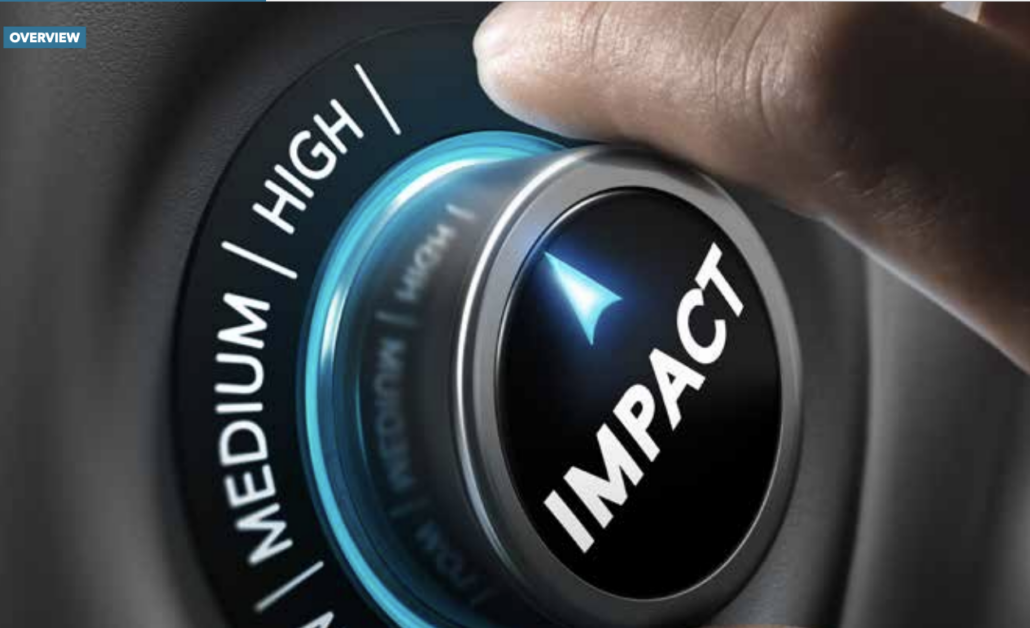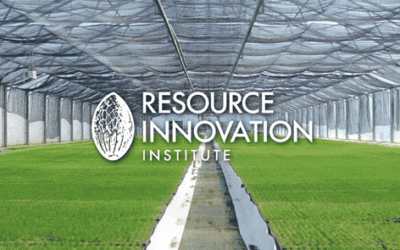Beyond Public Relations

Infrastructure Investor
While defining impact investing remains a work in progress, the number of investors seeking to create social and environmental benefits through their investments is clearly increasing. Kalliope Gourntis spoke with several industry experts about what motivates them and the challenges to be overcome.
“WHEN MANY INVESTORS first become aware of impact investing, they wonder if it is the same as socially responsible investing. It is not,” TriLinc Global, a California-based fund manager focusing on impact investing, states on its website. Infrastructure Investor posed the same question to fund managers and organisations active in the space and discovered that definitions do indeed vary (see p. 20).
But whether a fund manager or institution considers itself an impact investor or simply an investor that has adopted an impactful strategy, the consensus is that infrastructure and impact investing increasingly overlap.
“The impact investment conversation started around social enterprise – start-ups, food kitchens for food deserts, solar-powered flashlights and UV-filtered water bottles,” says Dave Chen, who is chairman and head of product development and research at Equilibrium Capital, but also professor of finance and programme director of impact investing at Northwestern University’s Kellogg School of Management. “But as time moves on, we’ve started to realise that to make something impactful and beneficial to society and the environment, it really cuts across the entire asset model.”
Abhilash Mudaliar, research director at the Global Impact Investing Network agrees: “One thing we’ve noticed through our work is that impact investors are motivated by a wide range of themes and sector-focused areas and so infrastructure is certainly one that appeals to a range of different impact investors.”
RENEWABLES’ APPEAL
One infrastructure sub-sector that draws a lot of investment appetite is renewable energy. According to the GIIN’s most recent annual survey (see p. 19), in which 158 impact investors with total assets under management of $15.2 billion participated, renewable energy, energy efficiency and clean technology were the three most popular themes impact investors pursue when seeking environmental impact. Energy was also the third most popular sector to which investors had current allocations and the second-highest in terms of increased allocations in the future.
Indeed, renewable energy is one of the most popular sub-sectors within infrastructure, not only as evidenced by the results of the GIIN survey, but also by those interviewed for this story.
“When we looked at renewable energy and made the decision to invest, we made that on the basis that it’s a good infrastructure investment within the overarching economic theme of the transition to a low-carbon economy,” Leisel Moorhead, partner of global infrastructure at Australian fund manager QIC, explains.
Referring to the Powering Australian Renewables Fund, which QIC launched last year with AGL Energy, Moorhead adds: “We can see that it’s going to deliver positive social impact because the estimation is it will result in the abatement of about 2.7 million tons of greenhouse gas emissions, which is equivalent to removing 800,000 cars off the road.” The fund aims to develop, own and manage between A$2 billion ($1.5 billion; €1.4 billion) and A$3 billion of large-scale renewable energy projects in Australia, with a capacity of more than 1,000MW.
Aside from being a prime example of impact investment within the context of infrastructure, renewables also help demonstrate why the lines between ESG, socially responsible investing, responsible investing and impact investing are blurred. “Just investing in a sector like renewables does not necessarily guarantee a purely positive impact,” says Archie Beeching, senior manager, fixed income and infrastructure at UN PRI. “A robust investment process that integrates ESG factors is also needed.”
Impax Asset Management executive director David Richardson explains how his firm does not automatically assume that it is making a positive impact by investing in a renewable energy project.
“When we invest in a project, we consider the reduction in the carbon emissions avoided as a result from power being generated from renewable sources. In coming up with those calculations, we are looking at the actual power we are displacing and not making assumptions that we’re just displacing some dirty coal plant,” Richardson says. “We’re looking at the environmental impact of a project, in terms of CO2 abatement as well as sitingissues or mitigating any adverse impacts on wildlife, for instance.”
QIC, on the other hand, applies a clearly defined framework, that is “essentially an overarching risk framework,” Moorhead says. “It’s to ensure that we understand how the essential services a given infrastructure asset provides and how its operations impact the workers, the users [and] the local community. Do workers have a safe and productive working environment? Is it a safe operation for the customers to use? Are there other issues, such as noise pollution, that need to be mitigated?”
IMPACT VARIES BY MARKET
In this sense, positive impact resulting from infrastructure investment is not limited to renewables. A road, for example, can also provide benefits to a community. Those benefits, of course, will vary depending on location. A road in the US may improve drivers’ quality of life by saving them time on their commute, while a similar asset in sub-Saharan Africa could help reduce hunger.
“One-third of the food that is produced in Africa doesn’t reach people because there’s no infrastructure to transport it,” remarks Linda Broekhuizen, chief investment officer at Dutch development bank FMO. “Secondly, there aren’t enough storage facilities to preserve the food and get it onto shelves,” she adds.
Asked why energy seems to outrank all other infrastructure sub-sectors (see chart), when other types of infrastructure can have such an important impact, the GIIN’s Mudaliar responds: “I definitely wouldn’t want to suggest that energy is the only sector within infrastructure that investors are allocating portfolios to, but the types of investors that possibly have the balance sheets to make large-ticket, capital-intensive investments that assets like roads and ports require tend to be development finance institutions.”
An example is the $20.5 million senior corporate loan FMO granted to Summit Alliance Port, so that the Bangladeshi company could expand by developing container transport by river. Enabling SAPL, the leading off-dock services provider in the country, to shift to a more environmentally friendly and efficient mode of transport than trucks means a substantial reduction of greenhouse gas emissions. In addition to the environmental benefits, the project will also help the country’s economy by improving cargo handling in the country and strengthening its international trade.
FMO provided the loan facility through its Infrastructure Development Fund, a €524.5 million fund launched in 2002 in collaboration with the Dutch Ministry of Foreign Affairs, to support private infrastructure investment in developing countries, FMO’s sole target markets.
Similarly, the United Nations Office for Project Services, which has singled out infrastructure, social housing and energy as its core areas of focus, invests primarily in what its executive director Grete Faremo calls “least-developed” and “fragile” countries. “We work often in emergency situations, in conflicts as well as middle-income countries with a long-term development perspective,” she says of the more than 80 countries where UNOPS is present. “But as I say, where there is conflict and a fragile situation, you’ll find UNOPS at its strongest.”
She describes the organisation’s social impact investing initiative in terms of partnering with the private sector to help achieve the UN’s 17 Sustainable Development Goals.
“The SDGs, which were adopted in 2015, are very ambitious,” she comments. “Around $2.7 trillion a year will be needed to meet the goals. If you calculate all the development aid, you only get $150 billion per year, which is clearly not enough.”
While infrastructure is clearly referenced in three of the 17 goals – clean water and sanitation, affordable and clean energy and industry, innovation and infrastructure – it also underpins many of the other SDGs as well, such as putting an end to poverty and world hunger, providing a quality education, and building sustainable cities and communities.
According to Faremo, UNOPS invests approximately $1.5 billion a year, while the agency’s portfolio comprises about 1,000 projects.
“Half of our portfolio is the implementation of projects on behalf of other UN agencies; the other half of the portfolio involves projects where we work directly with governments, multinational banks, foundations and the private sector,” she explains.
While working with the private sector is not a new development – a considerable portion of the UN’s $16 billion annual procurement budget goes towards the purchase of products and services from the private sector – Faremo emphasises that it was not until recently that UNOPS started sharing risk with its private partners.
An example of the type of investments UNOPS supports is a partnership with Ooredoo Myanmar, a telecoms provider that committed $3.1 million for for about 17 primary healthcare centres that UNOPS is designing and constructing across the country. The objective is to reduce high maternal and child mortality rates, particularly in rural areas.
Under the terms of the agreement, Ooredoo would also connect facilities already built or under development by UNOPS to faster internet service to improve patient care.
MEASURING CHALLENGES
Once they have committed to investments that will have a positive impact, investors still need to measure how successful those investments really are. Currently, that is one of the key challenges they face.
“Basically, there is no benchmark, no global standards for impact,” FMO’s Broekhuizen laments. “My dream is that at some point we’ll have international impact reporting standards, the way we have International Financial Reporting Standards, that will serve as a common language for investors to measure impact results as well as how you calculate your financial results.”
The GIIN, however, is working towards this end with its IRIS framework. “The goal behind IRIS is to develop a standard taxonomy that impact investors and other players in the ecosystem can use to measure and communicate their impact,” Mudaliar explains.
“The IRIS catalogue has over 550 metrics and that’s by design since there is a range of impact themes and issues that people pursue,” he continues. “An investor will pick a handful of metrics within that library that best suit their investment strategy and then measure and manage against those.”
Another way IRIS is used is by being integrated into a range of measurement tools and frameworks that already exist in the market and that impact investors and others use. “So, IRIS becomes the backbone or the building blocks of impact measurement frameworks that exist in the industry,” Mudaliar says.
Indeed, the investors we spoke with use a range of metrics. Impax, for example, reports data to IRIS but has developed its own methodology for measuring impact. Its metrics focus on CO2 emissions, CO2 emissions avoidance, renewable energy generation, water treatment and materials recovery and recycling.
The firm has also created a heat map that provides a qualitative indication for the positive impact of each company in its portfolio.
Equilibrium’s metric strategy is threefold. “Because our portfolios are very domain-specific – they’re in energy, green real estate, sustainable agriculture – we find that domain or sector-specific metrics start to emerge,” Chen says. “The key is figuring out which one to use in each case.” In real estate, Equilibrium uses the Global Real Estate Sustainability Benchmark, for instance.
“Our second level of metric is to look across our portfolio and find metrics that apply to Equilibrium as a holding company of asset managers and so less domain-specific,” Chen adds. “There, we’re looking at things like Sustainability Accounting Standards Board benchmarks and GIIRS ratings,” he says, referring to a metric developed by non-profit B Lab to help investors measure the impact of their portfolios.
In addition, Equilibrium has also created its own set of proprietary metrics, which Chen describes as “basic”, that look at overall energy consumption and reduction, water consumption and reduction, and carbon usage.
According to the GIIN survey, investors’ geographic focus also affects the metrics they use. The organisation found that a higher proportion of those investing in developed markets use proprietary metrics (76 percent) than IRIS-aligned metrics (54 percent), while the reverse is true for those focusing on emerging markets, with a proportion of 54 and 71 percent, respectively.
MOTIVATION
Despite the challenges, however, the number of investors choosing to allocate funds to impact investments is growing.
“From our understanding of the market, we think there is a range of different motivations for investors to allocate more capital to impact investing,” Mudaliar says. ”In addition, research by the GIIN and other organisations is also showing that impact investing can generate competitive financial returns.
“There are obviously some impact investments that are designed to generate concessionary returns, but then there are others that seek market-rate returns and are able to achieve that,” Mudaliar adds. All those interviewed for this story fall into the latter category with the exception of UNOPS, which also supports concessionary returns.
According to the GIIN survey, “the vast majority of respondents reported that their investments have performed either in line with or exceed both impact and financial categories”.
Another motivating factor is growing client demand. Equilibrium’s Chen comments: “People are lensing into companies’ behaviours, their consistency as well as their authenticity and this idea of being responsible is no longer PR and messaging, I think. It’s now becoming about: ‘How do we actually start to execute these strategies?’”
It is this combination of motivating factors that makes it unlikely impact investing will lose ground, even in the face of hostile policies, such as President Trump’s undoing of his predecessor’s environmental regulations.
“I think it’s important to separate the rhetoric from the reality,” Impax’s Richardson remarks. “After the demise of the repeal of Obamacare it is clear that it will be harder for President Trump to get his policies passed. I think it’s important to keep in mind that a lot of renewable energy policy is driven at the state level in the US and through the renewable energy standards that many states have adopted.
“It’s also important to recognise that a lot of the renewable energy development is not being driven by government policy, but by the fact that it is increasingly the lowest-cost source of power,” Richardson continues. “So whether that’s on individual residential rooftops, or larger community solar projects, or commercialscale wind farms, it’s increasingly done just because it makes the most economic sense, regardless of your political or environmental views.”
Mudaliar echoes that view: “One thing I can say about impact investing and our space more broadly is that the investment decisions and choices that people make are driven by values and the desire to align their portfolios with those values. So, I don’t see how – regardless of the politics of the time or which administration is in office – that’s going to change one’s values.
“On the flip side, if – and this is a big ‘if’ – policy does lead to significant changes in the economic incentives for investing in a particular sector, then we’ll have to wait and see how that impacts individual portfolios.
“It’s too early to tell, but from what we’ve seen to date, there is no reason to believe that there are going to be any major changes caused by political shifts.”






